MENTHYL SALICYLATE
- CAS NO.:89-46-3
- Empirical Formula: C17H24O3
- Molecular Weight: 276.38
- MDL number: MFCD00042623
- EINECS: 201-909-7
- SAFETY DATA SHEET (SDS)
- Update Date: 2025-01-27 09:38:02
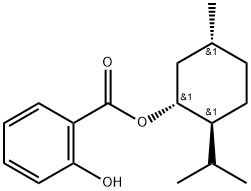
What is MENTHYL SALICYLATE?
Absorption
May be absorbed through intact skin. The absorption of topical salicylates is proportional to the surface area exposed, the duration of exposure, concentration and skin integrity. Absorption characteristics of salicylates vary with the dose, formulation, and route of administration. Percutaneous absorption is enhanced by exercise, heat, occlusion, or disruption of the integrity of the skin or application to large areas of skin. Both the rate and extent of absorption increases after continuous application, increasing its bioavailability .
Toxicity
Salicylate intoxication may occur after ingestion or topical application of menthyl salicylate.
Mild chronic salicylate intoxication, also known as salicylism, normally occurs only after repeated use of large doses.
Salicylism can also occur following the excessive topical application of salicylates. Symptoms of toxicity include dizziness, tinnitus, deafness, sweating, nausea and vomiting, headache, and confusion, and may be controlled by reducing the dosage .
Symptoms of more severe intoxication or of acute poisoning following overdose include hyperventilation, fever, restlessness, ketosis, and respiratory alkalosis and metabolic acidosis. Depression of the CNS may lead to coma, cardiovascular collapse and respiratory failure may also result .
Description
Methyl salicylate is almost odorless when pure. Slightly bitter-astringent taste. It carries the usual characteristics of a phenol, which are not exactly welcome by the perfumer.
Chemical properties
colourless to light yellow liquid
The Uses of MENTHYL SALICYLATE
As a "sun screen" to filter out ultraviolet light in Preparations for preventing sunburn.
The Uses of MENTHYL SALICYLATE
light stabilizer
Indications
For the temporary relief of pain associated with rheumatism, arthritis, neuralgia, sprains and strains of joints and muscles, lumbago and fibrositis .
Background
Menthyl salicylate is an ester of menthol and salicylic acid .
This product is used to treat minor aches and pains of the muscles/joints (e.g., arthritis, backache, sprains) .
Preparation
Menthyl salicylate is produced by azeotropic esterification of Menthol with Salicylic acid, using a Benzene- or Toluene sulfonic acid catalyst.
Pharmacokinetics
Menthol and methyl salicylate are known as counterirritants. They work by causing the skin to feel cool and then warm. Used together, they provide symptomatic relief for mild to moderate muscular and joint aches and pains, muscle cramps, shoulder aches and stiff neck..
Metabolism
Not Available
Properties of MENTHYL SALICYLATE
| Melting point: | <25 °C |
| Boiling point: | 186-190 °C/12 mmHg (lit.) |
| Density | 1.04 g/mL at 20 °C (lit.) |
| refractive index | n |
| Flash point: | 100℃ |
| pka | 8.10±0.30(Predicted) |
| Specific Gravity | 1.05 |
| Odor | Odorless or slight fruity odor |
| BRN | 3097754 |
| Stability: | Stable. Incompatible with strong oxidizing agents. Combustible. |
| EPA Substance Registry System | Benzoic acid, 2-hydroxy-, (1R,2S,5R)-5-methyl-2-(1-methylethyl)cyclohexyl ester, rel- (89-46-3) |
Safety information for MENTHYL SALICYLATE
| GHS Hazard Statements |
H413:Hazardous to the aquatic environment, long-term hazard |
Computed Descriptors for MENTHYL SALICYLATE
New Products
Methyl (R)-1-Boc-4,4-difluoropyrrolidine-2-carboxylate 2,2-Difluoropropylamine hydrochloride tert-butyl 3-bromoazetidine-1-carboxylate (R)-1-Boc-3-hydroxypyrrolidine DIFLUOROACETIC ANHYDRIDE 2,2-Difluoropropionic acid Diallylamine, 99% Calcium hydroxide, 95% Aluminum oxide, basic 2-Bromophenylacetonitrile, 97% L-tert-Leucine,97% N-Hydroxy-2-methylpropanimidamide 4-(3,4-Dichlorophenyl)-3,4-Dihydro-N-Methyl-1-(2H)-Naphthalenimine (Schiff Base) 2-AMINO-3,5-DIBROMO BENZALDEHYDE [ADBA] L-Glutamic Acid Dimethyl Ester Hcl 10-Methoxy-5H-dibenz[b,f]azepine 5-Cyanophthalide N, N-Carbonyldiimidazole (CDI) Dibenzoyl Peroxide Titanium Dioxide 2-(Methylthio) Benzonitrile Sodium Acetate Anhydrous Allopurinol 1,5-DibromopentaneRelated products of tetrahydrofuran

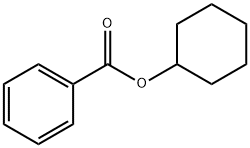


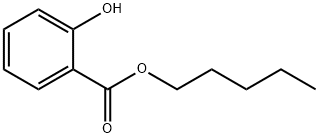
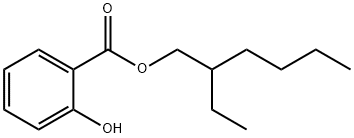
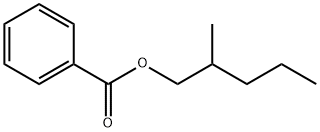
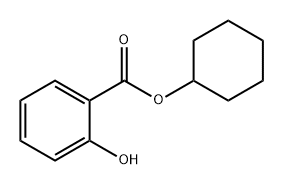
You may like
-
 Menthyl salicylate CAS 89-46-3View Details
Menthyl salicylate CAS 89-46-3View Details
89-46-3 -
![Cis-2-(Bromomethyl)-2-(2,4-Dichlorophenyl)-1,3-Dioxolane-4-Ylmethyl Benzoate [CBB] 61397-56-6 99%](https://img.chemicalbook.in//Content/image/CP5.jpg) Cis-2-(Bromomethyl)-2-(2,4-Dichlorophenyl)-1,3-Dioxolane-4-Ylmethyl Benzoate [CBB] 61397-56-6 99%View Details
Cis-2-(Bromomethyl)-2-(2,4-Dichlorophenyl)-1,3-Dioxolane-4-Ylmethyl Benzoate [CBB] 61397-56-6 99%View Details
61397-56-6 -
 287930-77-2 / 142569-70-8 99%View Details
287930-77-2 / 142569-70-8 99%View Details
287930-77-2 / 142569-70-8 -
 Ethyl-2-Chloroacetoacetate 609-15-4View Details
Ethyl-2-Chloroacetoacetate 609-15-4View Details
609-15-4 -
 CIS- BROMO BENZOATEView Details
CIS- BROMO BENZOATEView Details
61397-56-6 -
 609-15-4View Details
609-15-4View Details
609-15-4 -
![1-(6-Methylpyridin-3-Yl)-2-[4-(Methylsulfonyl)Phenyl]Ethanone [Ketosulfone] 99%](https://img.chemicalbook.in//Content/image/CP5.jpg) 1-(6-Methylpyridin-3-Yl)-2-[4-(Methylsulfonyl)Phenyl]Ethanone [Ketosulfone] 99%View Details
1-(6-Methylpyridin-3-Yl)-2-[4-(Methylsulfonyl)Phenyl]Ethanone [Ketosulfone] 99%View Details
221615-75-4 -
 27143-07-3View Details
27143-07-3View Details
27143-07-3
